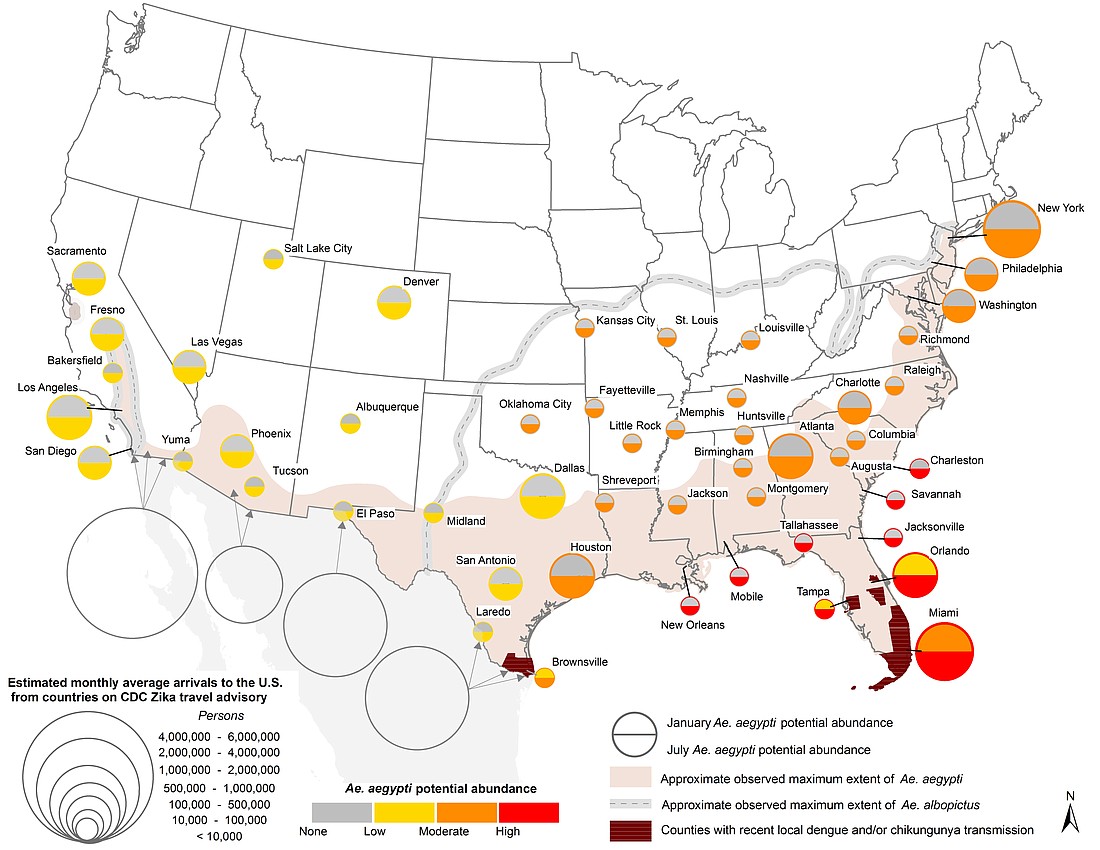- April 18, 2024
-
-
Loading

Loading

The Zika virus is expected to be on its way to Seminole County in numbers higher than nearly all of the country, according to predictive data and graphs released by NASA today.
Florida is estimated to see by far the biggest jump in Zika cases compared to the rest of the United States, due to a large number of travelers from Zika-prevalent countries and a tropical environment that harbors more of the mosquitoes that can carry the virus.
According to the Centers for Disease Control, the Zika virus usually produces cold or flu-like symptoms, or can be completely asymptomatic, but some patients have seen more serious symptoms, and it can cause severe birth defects. More than 2,000 cases of Zika-caused microcephaly, causing unusually small heads in babies and possible brain damage, have been reported in Brazil so far.
The NASA study shows that by June, cities in Florida could expect to see moderate-to-high abundance of aedes aegypti mosquitoes, which can carry the virus.
The CDC has released maps and data showing the potential spread of the virus here: http://www.cdc.gov/zika/vector/range.html
Seminole County has already stepped up mosquito controls and spraying to reduce mosquito lifespans. Mosquitoes can only transmit the virus for roughly two weeks of their lives. To prevent mosquitoes near your home, authorities recommend searching your home and yard for standing water, including clogged rain gutters, and dumping it out to prevent mosqitoes from breeding there. A single mosquito can lay up to 200 eggs in its lifespan, which can result in rapid increases in population if they're given a place to breed.